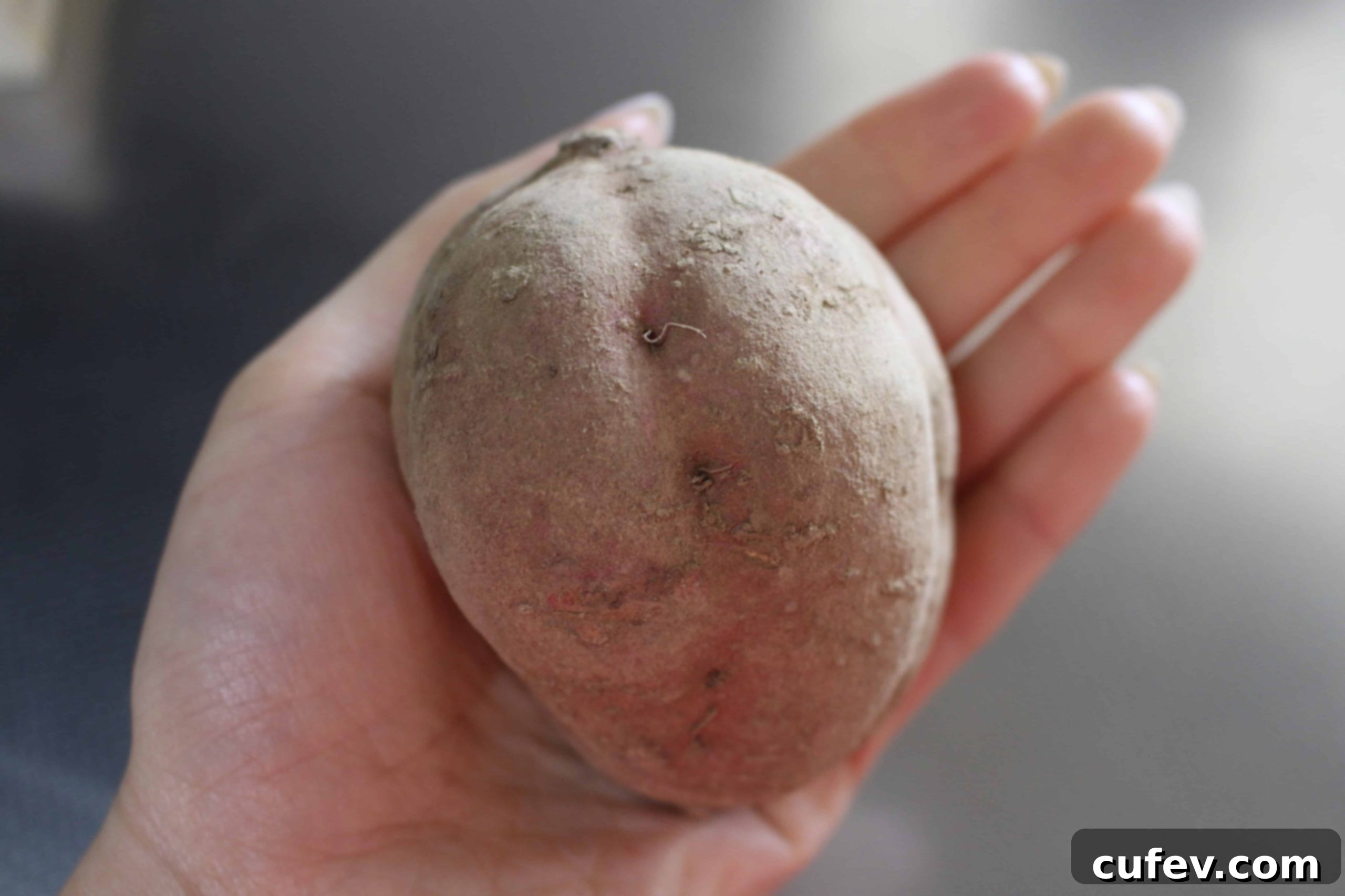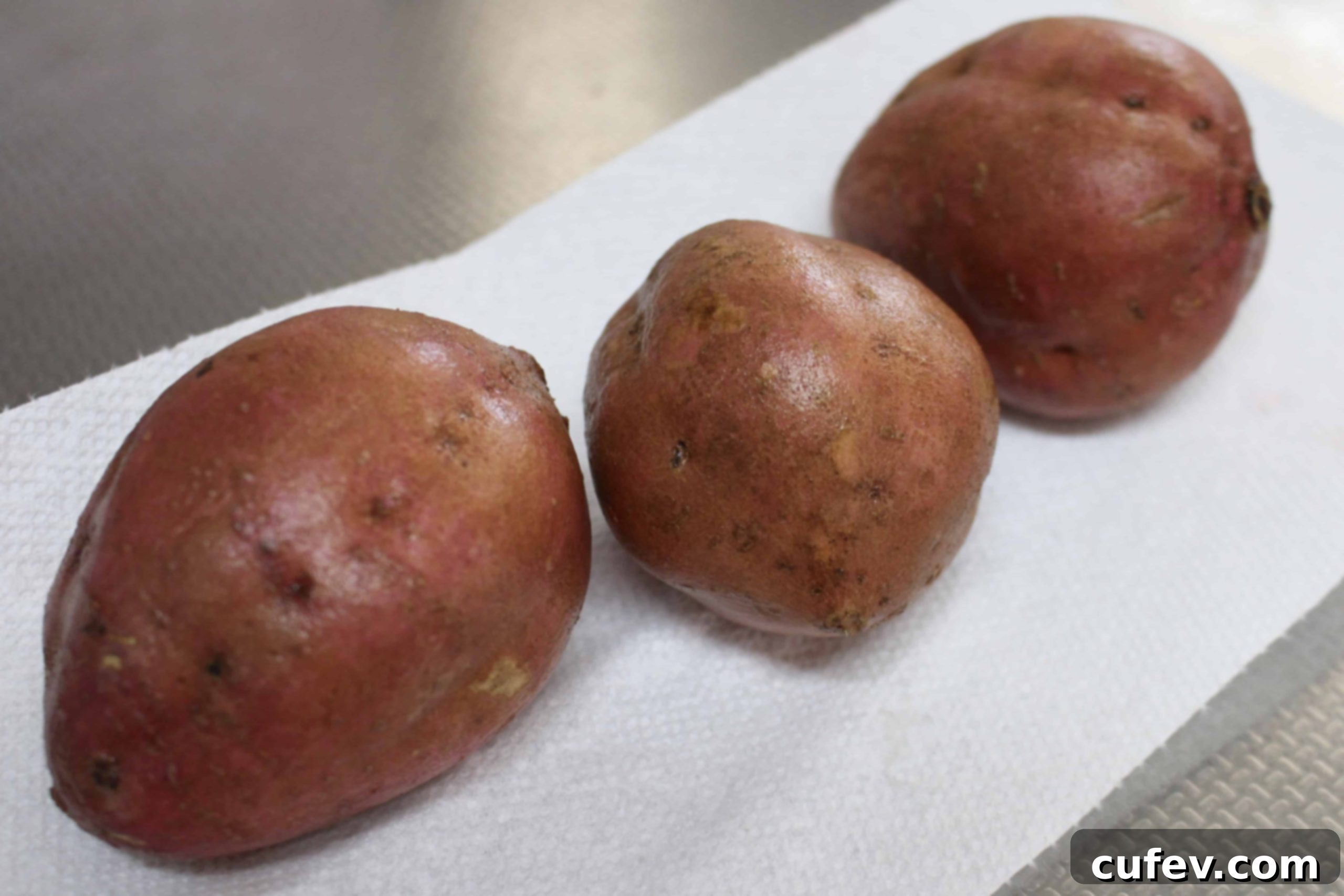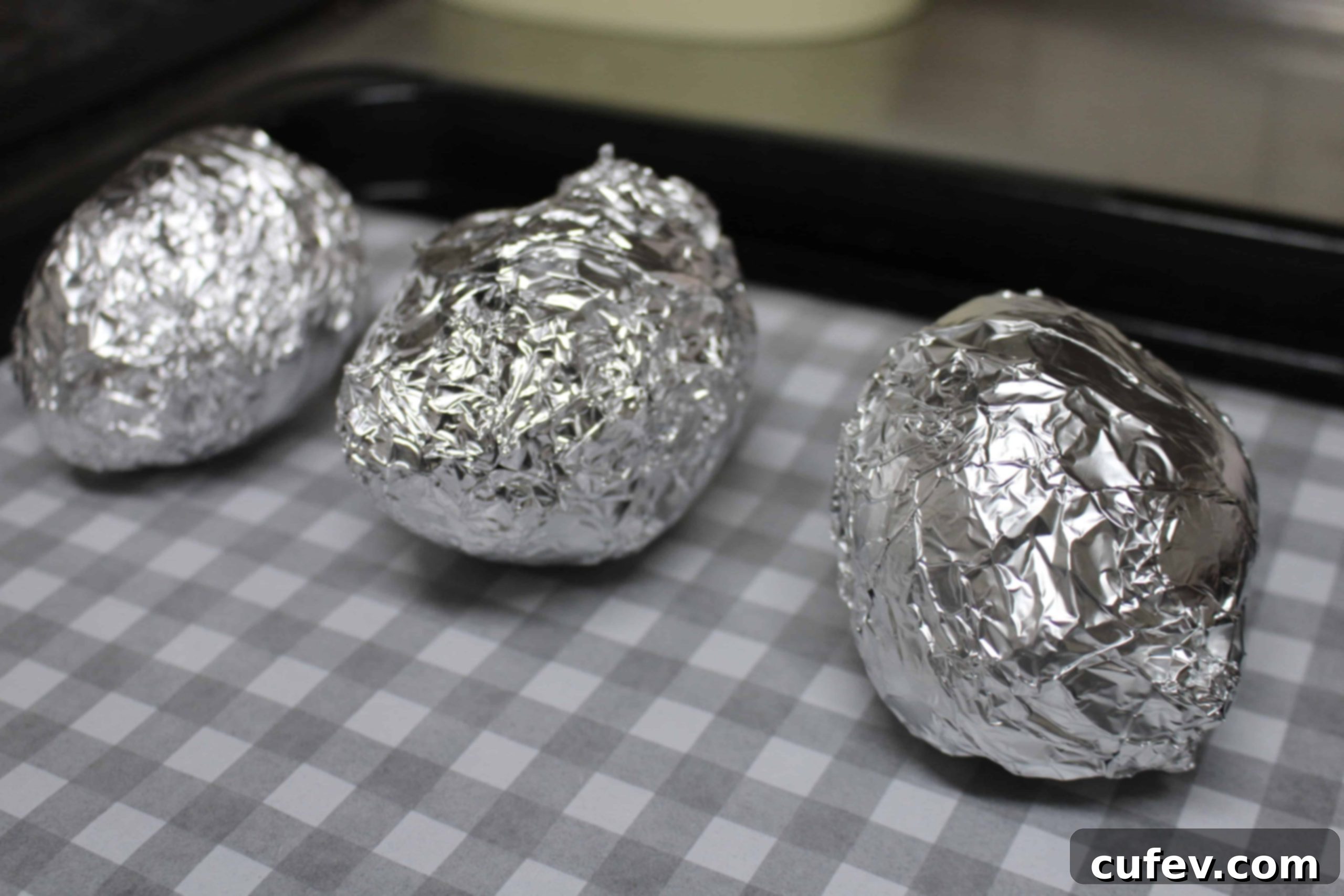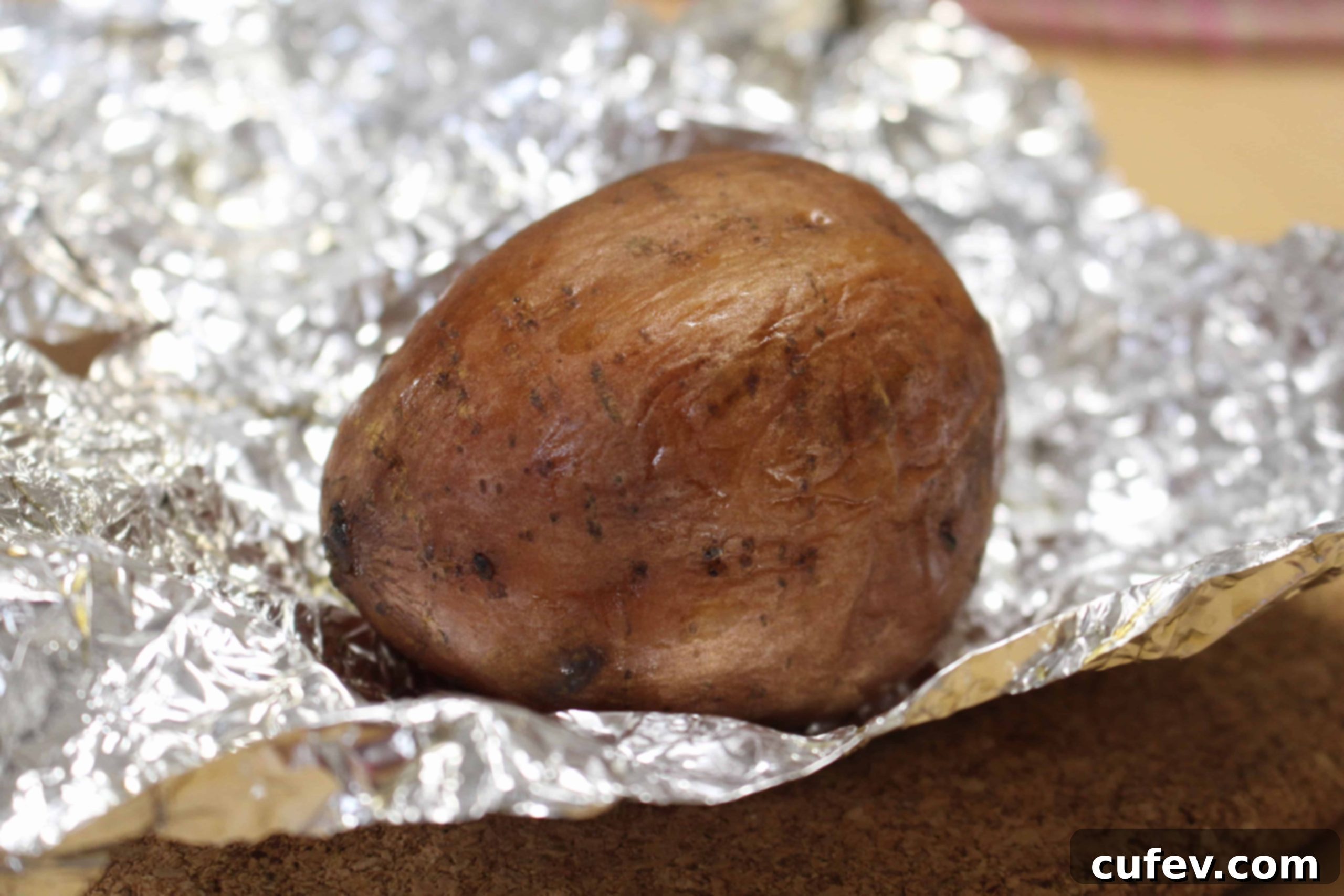The Ultimate Guide to Perfectly Roasted Japanese Sweet Potatoes: A Taste of Tradition, Made Easy at Home
The arrival of autumn and winter in Japan brings with it a cherished tradition and a heartwarming aroma: the sound of the *Ishiyaki Imo* (stone-cooked sweet potato) vendor. When I was a child, these seasons were filled with a special excitement as the sweet potato man would make his rounds. You could hear him long before you saw him, his distinct, melodic call of “Ishiyaki imo~” echoing through the neighborhood via a megaphone. It wasn’t music, just his voice, a simple yet powerful signal that a hot, comforting treat was near.
On the back of his small white truck, an array of vibrant sweet potatoes would be slowly cooking over hot stones, their natural sugars caramelizing into a delightful snack. While the memory itself is sweet, the reality of those street-vendor sweet potatoes was sometimes a gamble. There were those magical moments when you’d get a perfectly moist, incredibly sweet potato that melted in your mouth. But, more often than not, the anticipation would lead to a potato that was a bit dry, perhaps even crumbly. You truly never knew what culinary adventure awaited until you broke open that warm, earthy skin.
Despite the occasional imperfection, receiving a piping hot sweet potato from the vendor on a chilly day was always a special occasion. It was more than just food; it was a sensory experience, a comforting ritual that marked the changing seasons.
Even now, I still hear the familiar song of the sweet potato man driving through our town during the evenings. It evokes a strong sense of nostalgia, a longing for simpler times. However, I no longer rush out the door with the same childhood urgency. Over the years, I’ve perfected a method for roasting Japanese sweet potatoes at home, ensuring they turn out flawlessly every single time – consistently moist, incredibly sweet, and bursting with flavor. With this technique, the sweet potato man’s unpredictable offerings simply can’t compete with the perfection achieved in my own kitchen.

Japanese Sweet Potatoes: A Distinctive Delight Compared to North American Varieties
Understanding the unique characteristics of Japanese sweet potatoes is key to cooking them perfectly. Unlike their North American counterparts, which tend to be softer, moister, and often have orange flesh, Japanese sweet potatoes are typically harder, starchier, and possess a distinct texture and flavor profile. This inherent difference is precisely why my slow roasting process yields such exceptional results, transforming their firm flesh into a caramelized, tender delicacy.
Visually, Japanese sweet potatoes are easily recognized by their beautiful reddish-purple skin and creamy, often pale-yellow to white interior. Beyond their general characteristics, there are several popular varieties, each offering subtle nuances in taste and texture. My personal favorite, Annoh-imo (安納芋), is renowned for its exceptional sweetness and incredibly moist, almost custard-like texture when cooked. These qualities also make them a bit pricier than other varieties, but their melt-in-your-mouth experience is truly worth it. However, the slow roasting method I’m about to share works wonderfully with all types of Japanese sweet potatoes, including other popular kinds like Beni Azuma, Murasaki, and Kintoki, ensuring a delicious outcome every time.
When selecting Japanese sweet potatoes, look for ones that are firm, heavy for their size, and free from soft spots or excessive blemishes. While *Annoh-imo* offers peak sweetness and moisture, varieties like Beni Azuma provide a balanced sweetness with a slightly firmer texture, and Murasaki sweet potatoes are known for their striking purple skin and a less intensely sweet, earthy flavor. No matter your choice, the transformation they undergo during slow roasting is nothing short of magical, bringing out their latent sweetness and creating a truly satisfying treat.

The Science of Sweetness: Why Slow Roasting Transforms Japanese Sweet Potatoes
The secret to achieving that irresistible candy-like sweetness and perfectly moist texture in Japanese sweet potatoes lies in the slow roasting process. It’s not just about cooking them; it’s about activating their natural enzymes to create a truly superior flavor. Japanese sweet potatoes are rich in starches and an enzyme called beta-amylase. When these potatoes are cooked slowly at lower temperatures, this enzyme gets to work, breaking down the complex starches into simple sugars, primarily maltose. This enzymatic conversion is what gives them their characteristic intense sweetness, far beyond what you’d achieve with quick, high-heat cooking.
Additionally, the extended cooking time allows for the Maillard reaction to occur, leading to delicious browning and caramelization of the sugars on the potato’s surface and just beneath the skin. This creates a slightly crisp, flavorful exterior that perfectly complements the soft, sweet interior. Cooking them gently and without preheating the oven ensures that the temperature rises gradually, giving the beta-amylase enzyme ample time to work its magic before higher temperatures deactivate it. This gradual process locks in moisture and maximizes flavor development, resulting in a sweet potato that is not only tender but also incredibly rich in natural sweetness, reminiscent of a dessert.
How to Slow Roast Japanese Sweet Potatoes to Perfection
Achieving perfectly sweet and moist Japanese sweet potatoes at home is surprisingly simple, yet requires a bit of patience. Follow these steps for an unparalleled culinary experience.
Step 1: Preparation is Key
Start by thoroughly washing your Japanese sweet potatoes under running water. Use a vegetable brush or a sturdy sponge to scrub off any dirt, as you’ll be leaving the skin on. While it might be tempting to peel the skin or trim the ends, resist the urge! The skin plays a crucial role in trapping moisture inside the sweet potato during the slow roasting process. Removing it or cutting into the potato will cause it to dry out in the oven, compromising that desired moist texture. You can always peel and chop them after they’ve come out of the oven if you prefer, but I personally love to eat them skin-on for extra nutrients and flavor, which is why a good scrub is essential.

Step 2: Wrap and Arrange
Once clean, wrap each sweet potato individually in aluminum foil. This foil acts as a protective barrier, creating a small steaming environment that helps retain moisture and allows the potatoes to cook evenly without drying out or burning. Place the wrapped sweet potatoes on a baking sheet. It is absolutely crucial to line your baking sheet with parchment paper. As these sweet potatoes slowly bake, their natural sugars will begin to ooze out and caramelize. Without parchment paper, this incredibly delicious, candy-like juice will stick firmly to your baking sheet, creating a difficult cleanup and wasting precious flavor. The less time spent scrubbing, the faster you get to enjoy your perfectly baked sweet potatoes!

Step 3: The Cold Oven Method – Slow Roasting for Maximum Sweetness
Here’s one of the most important tricks: place your baking sheet with the wrapped sweet potatoes into a *cold* oven. Do not preheat the oven. Set your oven to 320°F (160°C) and bake for approximately 90 to 120 minutes. The reason for starting with a cold oven is to allow the sweet potatoes to gradually come up to temperature. This slow and steady heating is vital for the enzymatic conversion of starches to sugars, which dramatically increases their sweetness, giving them that signature candy-like flavor and an incredibly tender texture.
Baking times will vary depending on the size and thickness of your sweet potatoes. For smaller to medium-sized potatoes, 90 minutes might be sufficient. For larger ones, you might need an additional 20-30 minutes, or even longer. You’ll know they’re done when they feel very soft when squeezed (carefully, through the foil!) and you might even see some sweet juice seeping out onto the parchment paper, turning into delicious caramelized bits. These caramelized bits are pure sweet potato candy, so don’t discard them! Peel them off the parchment paper and enjoy them as a bonus treat. While the wait might seem long, the patience you invest will undoubtedly pay off with a superior sweet potato experience.

Step 4: Unveil and Enjoy
Once your sweet potatoes are done, carefully remove them from the oven. Let them cool for a few minutes until they are comfortable enough to handle. Then, carefully peel off the aluminum foil. Don’t be surprised if your sweet potato appears slightly wet on the surface or feels incredibly soft; this is a sign of ultimate success and means it’s extra moist and perfectly cooked through. The longer you allow them to bake (within reason), the sweeter and more intensely flavorful they become, as more starches convert to sugars.

Just look at that magnificent result! Super moist, incredibly tender, and perfectly cooked sweet potatoes. They are so naturally sweet and rich that there’s absolutely no need for any added butter, sugar, or other toppings. They are a delightful treat on their own, a testament to the power of simple ingredients and a proper cooking technique. Enjoy them warm, straight from the oven, and savor every naturally sweet bite.
A Nutritional Powerhouse: The Health Benefits of Japanese Sweet Potatoes
Beyond their incredible taste, Japanese sweet potatoes are also packed with an impressive array of nutrients, making them a wonderfully healthy addition to your diet. Who would have thought such a sweet treat could be so incredibly nutritious? They are particularly high in:
- Vitamin A: Crucial for vision, immune function, and skin health.
- Vitamin C: A powerful antioxidant that supports immunity and collagen production.
- B Vitamins: Including B6, which is important for brain health and metabolism.
- Potassium: An essential mineral that helps maintain healthy blood pressure and fluid balance.
- Fiber: Promotes digestive health, helps regulate blood sugar levels, and contributes to a feeling of fullness.
- Manganese: Plays a role in bone health, metabolism, and antioxidant defense.
Their complex carbohydrates provide sustained energy, and their low glycemic index compared to regular potatoes makes them a better choice for blood sugar management. Enjoying these naturally sweet, oven-baked Japanese sweet potatoes is truly a guilt-free pleasure, offering both incredible flavor and significant health benefits.
Tips for Perfection and Beyond
To ensure your sweet potatoes are always a success and to make the most of them, consider these additional tips:
- Choosing the Best: Look for firm, unblemished sweet potatoes. Avoid any with soft spots or excessive sprouts. Medium-sized potatoes tend to cook more evenly.
- Doneness Check: If you’re unsure if they’re cooked, gently insert a skewer or fork through the foil. It should slide in with very little resistance.
- Leftovers: Perfectly roasted sweet potatoes store well in an airtight container in the refrigerator for up to 3-5 days.
- Reheating: To reheat, simply pop them back into a warm oven (around 300°F/150°C) for 15-20 minutes, or microwave until heated through. The oven method will help restore some of their texture.
- Serving Suggestions: While delicious on their own, these sweet potatoes are incredibly versatile. Try them as a healthy side dish, mashed into a creamy puree, or even as a base for savory toppings like a dollop of Greek yogurt and chives, or sweet additions like a sprinkle of cinnamon and a drizzle of maple syrup. They can also be cubed and added to salads or used in baked goods.
Embracing the slow roasting method for Japanese sweet potatoes unlocks their full potential, turning a humble vegetable into a luxurious, naturally sweet, and incredibly satisfying dish. Say goodbye to dry, inconsistent results and hello to perfectly moist, caramelized goodness every time.
Recipes to try with your perfectly baked sweet potatoes!
Once you’ve mastered the art of oven-baking Japanese sweet potatoes, you’ll find them a versatile ingredient for many other delicious dishes. Don’t limit yourself to just eating them plain!
Sweet potato cake with maple cashew frosting

Oven-Baked Japanese Sweet Potatoes
Print
Pin
Rate
Ingredients
- Japanese sweet potato (as many as you’d like to bake)
- Aluminum foil
- Parchment paper
Instructions
-
Thoroughly wash the sweet potatoes (do not peel or cut them) and wrap each one individually in aluminum foil. Place them on a baking sheet lined with parchment paper.
-
Place the baking sheet in a cold oven and set the temperature to 320°F (160°C). Bake for 90 to 120 minutes, or longer for very large potatoes. Baking times will vary based on size; start checking for doneness around 90 minutes. They are ready when they feel very soft to the touch through the foil, and you may see sweet juice caramelizing on the parchment.
-
Carefully remove from the oven, let cool slightly, then unwrap and enjoy your perfectly moist and sweet Japanese sweet potatoes!
